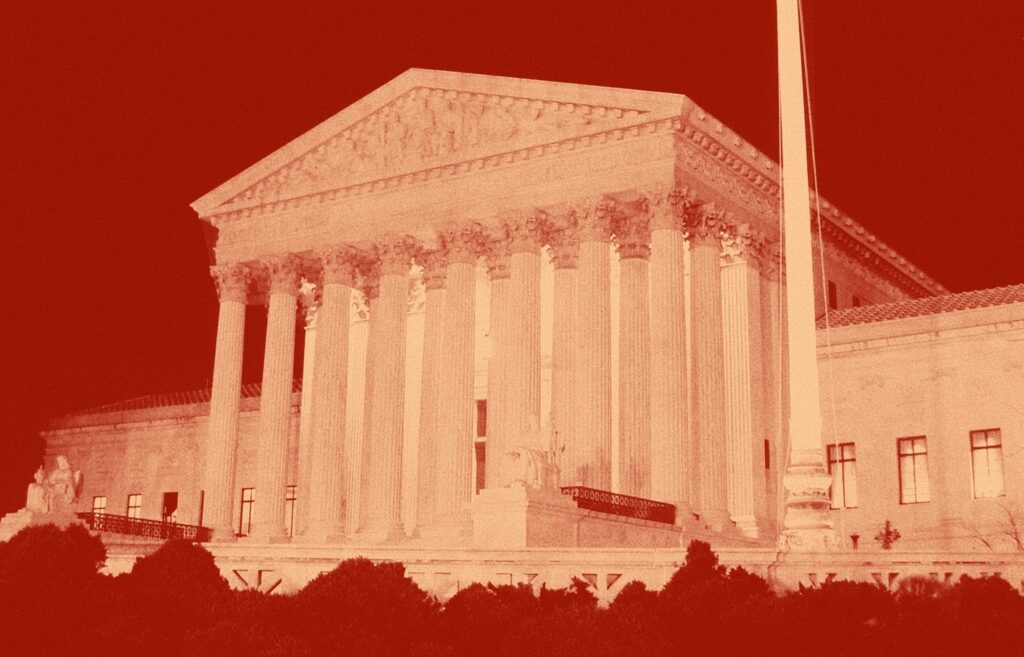President Biden has made tackling climate change one of the central objectives of his administration. Since his first week in office, he has embraced a “government-wide” approach to the problem, instructing federal agencies “to immediately commence work to confront the climate crisis.” So it may have come as a surprise when two federal agencies recently announced that they would scale back several of the administration’s most heralded proposals to address greenhouse gas emissions. The Environmental Protection Agency (EPA) will cut standards for existing gas-fired power plants out of its final rule regulating greenhouse gas emissions from the power sector and push back the deadlines for automakers to meet new tailpipe standards for cars. The Securities and Exchange Commission (SEC) has greatly weakened its landmark proposal to require publicly traded companies to disclose their climate-related emissions.
Election-year politics surely played a role in these decisions. But they also bear the imprint of the Supreme Court’s recent, dramatic reversal of its approach to interpreting the laws underpinning the EPA’s and SEC’s rules. In 2022, in West Virginia v. EPA, the Supreme Court decreed, for the first time, that Congress may not authorize an agency to address an important issue—a “major question,” as the Court put it—unless it does so in super-clear terms. With this new interpretive approach in hand, the Court rejected an Obama-era EPA rule governing greenhouse gases from fossil fuel–fired power plants, finding that the relevant statute, the Clean Air Act, did not speak clearly enough to authorize the EPA to engineer a shift from coal-based power to gas power and renewables. At the same time, the Court blessed a Trump-era rule addressing the exact same question, but answering it in the opposite direction. The only difference between the two rules? The Obama-era rule tried to do something about climate change, whereas the Trump-era rule did not.
The Supreme Court had served notice that the Biden administration’s signature approach to governance—one that takes on big problems in bold ways—was, suddenly, legally suspect. This change in direction makes it far more difficult for agencies to take on enormous problems like climate change at a level of ambition that matches the scale of the problem. Now, any agency that invokes a broad, longstanding statute to justify a strong response to such a problem may find itself, as the EPA and SEC may in defending even their watered-down climate rules, in the courts’ crosshairs.
But it’s not only the biggest, most ambitious rules that have drawn judicial fire. The Supreme Court has also become hostile to the long-extant principle that, where a law is ambiguous, courts should defer to the reasonable interpretation of the agency charged with implementing it. This principle, known as Chevron deference for the case that solidified it, has long governed the courts’ approach to reviewing agencies’ legal interpretation in cases large and small. For decades agencies had the assurance that the courts would review their interpretations of unclear statutes with a light touch. Yet this term, the Court has agreed to decide whether to overrule Chevron in two cases that challenge agencies’ authority to interpret the laws they administer. It is a prospect that threatens to further shrink agencies’ imaginative horizons—and to bring them further under the heel of an increasingly power-hungry conservative legal movement.
Agencies are created, funded, overseen, and given directions by Congress, and they can only do what Congress has given them the power to do. When any one of the thousand or so agencies in the federal government makes a regulatory decision, the most fundamental question for a court reviewing that decision is whether Congress gave the agency the power to do what it did. Everyone—from legal scholars to elected representatives to Supreme Court justices—agrees on this basic point.
In addition, courts have long held that in discerning the meaning of statutes, they should pay respectful attention to the interpretive views of the agencies that administer them—an approach crystallized by the 1984 Chevron case. In Chevron, the Court outlined a two-step test. First, if a statute clearly allows or forbids an agency’s decision, that clear meaning prevails. But if a statute is ambiguous, the courts should defer to the agency’s view as long as it’s reasonable. Agencies, the Court reasoned, had superior institutional capacity and position. Unlike courts, agencies are staffed with experts who understand the practical consequences of approaching a statute in one way rather than another. And unlike life-tenured federal judges, agencies are accountable to Congress, and most often to the president, for their decisions.
Presidential influence has suffused the Chevron principle from the beginning. Chevron involved a legal challenge to a rule that grew out of President Reagan’s campaign pledge to “get the government off the backs” of the American people. During his presidency, the EPA reinterpreted the word “source” in the 1970 Clean Air Act in a way that freed many of the country’s most polluting industrial energy sources from the obligation to obtain permits and install pollution controls when they modified their existing facilities, as long as the modifications didn’t increase total pollution. The Supreme Court blessed the agency’s change of heart by reference to the change in presidents, explaining that “an agency to which Congress has delegated policymaking responsibilities may . . . properly rely upon the incumbent administration’s views of wise policy to inform its judgments.” In a later case known as Brand X, the Court confirmed what Chevron had made plain: the election of a new president may change the way agencies interpret the laws they administer.
For decades, Congress has legislated under the Chevron framework, presidents have banked on it, agencies have issued rules and adjudicated cases based on it, and the courts have generated a huge body of case law applying and refining it. The Supreme Court has deferred to agencies’ interpretive judgments at the second step of Chevron in 72 decisions. Federal trial and appellate courts have, astonishingly, cited Chevron over 18,000 times. One might say, to borrow a phrase, that the cases applying the Chevron framework to determine the meaning of individual statutes have created “precedent on precedent”—thousands of times over.
But during the Obama administration, the worm began to turn. Conservative scholars and judges suddenly discovered in the 1946 Administrative Procedure Act a provision which, they argued, forbade judicial deference to agencies’ statutory interpretations. They also had the revelation that the Constitution itself had, all along, also made judicial deference to these interpretations illegal. Citing Marbury v. Madison, under which the Supreme Court gave itself the power to review federal laws for compliance with the Constitution, they declared that allowing Congress to delegate interpretive authority to agencies was wresting the power “to say what the law is” from the federal courts.
These late-blooming arguments hit their target. Seemingly overnight, the Court decided that it was time to ghost Chevron. It last deferred to an agency’s interpretation of a statute in 2016. Since then, it has often found the relevant statutes clear enough to make deference unavailable. But a subtle but important shift happened in 2022. In American Hospital Association v. Becerra, a case in which the parties challenging a Department of Health and Human Services interpretation had explicitly asked the Court to overrule Chevron, Justice Brett Kavanaugh wrote an opinion for a unanimous Court that did not so much as mention it. He summed up his reasoning rejecting the agency’s interpretation with a statement that perhaps only Chevron wonks would notice: “we do not agree.” A signature feature of the Chevron framework has always been that the courts are expected to defer to agencies’ reasonable interpretations of ambiguous statutes even if they do not think the agencies’ interpretations are the best ones. Kavanaugh’s “we do not agree,” then, was like a glove thrown down before a duel, signaling a fight to come.
For all the weight they hold, the two cases that could bring down Chevron have quite evanescent stakes. Loper Bright Enterprises v. Raimondo and Relentless v. Department of Commerce both involve legal challenges to a rule requiring commercial fishing operations to pay for private onboard observers to oversee their compliance with a fisheries management plan, a rule issued by the National Marine Fisheries Service in 2020 and only enforced for a single year (The rule’s operation has been indefinitely suspended since April 2023). So far as court records and the parties’ briefing reveal, the rule has never required the parties challenging it to change their own behavior in any respect. Nor has it, as far as court records and briefing reveal, required these litigants to spend any money. It would take an act of Congress, in the form of additional appropriations for the agency, before anyone would have to change their behavior or spend money because of the rule.
Loper Bright and Relentless are based on hypothetical injuries that the parties might suffer in the future if certain events occur—usually not enough to sustain federal jurisdiction over a case, let alone persuade the Supreme Court that the timing is right for its review. The Court has long held that where the impact of a federal regulation cannot “be said to be felt immediately by those subject to it in conducting their day-to-day affairs,” a challenge to that regulation is not ripe for judicial review. So it is puzzling that the Court would use two of its precious few case slots (the Court annually receives 7,000 to 8,000 petitions for review yet in each of the last two terms decided fewer than 60 cases) for cases with such suppositious stakes. Puzzling, but increasingly common: the Clean Air Act rule undone by the “major questions” doctrine in 2022 was also not in effect when the Court killed it.
It becomes less of a mystery when one realizes that the stakes in Loper Bright and Relentless are not concrete or practical but ideological. In deciding to hear the cases, the Court made sure of that. Both petitioners asked the Court to review two questions, a specific one—did the underlying statute authorize the agency’s rule? and a broad one—should Chevron v. NRDC be overruled altogether? The Court accepted review only on the second question, thus putting the cases in the most abstract—and most consequential—posture possible. By doing so, the Court has made clear that the decision whether to overrule Chevron will simply have nothing to do with the specific statutory issue or the specific parties before the Court. In fact, it is conceivable that the Court will decide the cases without analyzing the text of the statute that gave rise to them or resolving the fishing companies’ specific dispute at all.
This is not to say that the hypothetical plight of the commercial fishers in Loper Bright and Relentless does not matter. It matters a great deal for optics. The Supreme Court has complete discretion over the cases it hears; it could have chosen to review any one of a number of petitions touching on Chevron’s continuing vitality. But at a time when the its public image has been tainted by several justices’ all-expenses-paid outings with billionaires and research showing that the Roberts Court is the most pro-business Court in a century, it is no accident that the public faces of this term’s marquee cases are small businesses in a hardscrabble industry. Scratch the surface, though, and it’s not hard to find the billionaires. Representing the commercial fishing firms are legal advocates bankrolled by organizations with ties to Charles Koch, whose petrochemical companies have given him one of the world’s largest fortunes. A telling symmetry thus bookends the Chevron era’s rise and fall: fossil-fuel interests won in Chevron itself, and now that it no longer suits them, they’re trying to finish it off.
The petitioners and those who filed amicus briefs on their behalf in Loper Bright and Relentless are throwing a kitchen sink of arguments at Chevron. Chevron, they say, takes away federal judges’ power to say what the law is. It tramples on due process because it favors the government. It lets Congress avoid the tough business of legislating. It concentrates power in the president. It made Congress dysfunctional. Put more plainly, they argue that Congress is feckless and the president a tyrant, and the only mistake the courts have made is to cede control of the government to them. It’s not surprising, then, that the most likely replacement for Chevron is a test that puts judges in charge of statutory interpretation.
Under the alternate approach proposed by Chevron’s foes, embraced by several conservative justices at oral argument, judges would determine the “best” interpretation of a statute on their own without giving special credence to the agency’s interpretation. The assumption here is that there is only one “best” interpretation of a statute—that it has only one true meaning as applied to any given circumstance. It was left to Justice Sonia Sotomayor to puncture this logic at oral argument. “Best only because a majority agrees?” she wondered. She raises an ominous prospect. If the legally acceptable interpretation of a statute is to become what a majority of justices on the (currently hyperconservative) Supreme Court believe it should be, then we’re in for a wild ride.
Chevron’s foes and the conservative justices have also seemed to converge on a vision of the left-over role agencies would play in statutory interpretation after Chevron. As they see it, an agency would remain free to persuade judges that its view of a statute is the best one, a notion that comes from a 1944 opinion written by Justice Robert Jackson in Skidmore v. Swift. In it, Jackson acknowledged that an agency’s interpretation could be used for “guidance” in a court’s decision—but only to a certain degree. “The weight of such a judgment in a particular case,” he wrote, “will depend upon . . . all those factors which give it power to persuade, if lacking power to control.”
Though nicknamed “Skidmore deference” for the case that created it, in truth this approach reflects no deference at all. Skidmore allows courts to reflect on an agency’s perspective and to be persuaded that it is the best way to interpret a given statute. But this is no more a “deference” regime than the adversarial process itself, which permits all litigants to try to persuade judges that their view of a matter is the best one. If the anti-Chevron people have their way, agencies will be just one of many parties fighting to have their voice heard—a voice today’s Court won’t be terribly eager to consider seriously. As Justice Elena Kagan, criticizing the approach, put it, “Skidmore means, if we think you’re right, we’ll tell you you’re right.”
But even the Skidmore approach’s wan gesture in the direction of the other branches proved too much for Kavanaugh. Three times during the oral argument, he stressed that the posture—which, again, entails merely a willingness to hear an agency’s views—would be triggered only by “contemporaneous and consistent” agency interpretations. This means that only in the first flush of a statute’s life would courts need even to entertain an agency’s perspective. Statutes that presume to empower agencies to address problems that may change in the future—that is, almost all of them—had better be administered by agencies with crystal-ball insights.
Congress, too, has been unable to escape the Court’s scalpel. Under its new major questions doctrine, it can divest Congress of the power to authorize an agency to take on a major political problem if the statute behind it is too old or the agency’s past practice too dissimilar from its proposed role. These factors are just differently worded versions of Justice Kavanaugh’s “contemporaneity” and “consistency”—and all of them are prescriptions for statutory senescence.
Lest one feel moved to hope that the Court’s grudging attitude toward congressional power might recede if Congress passes a brand-new law, bear in mind the Court’s scorching reception of the Affordable Care Act (ACA) and the Dodd-Frank Act, two of the most consequential new laws of the past fifteen years. In 2012 the Court came within a hair’s breadth of striking down the ACA and today has been busy dismantling Dodd-Frank’s protections bit by bit. Whether old or new, legislation that empowers agencies to address significant problems gets at best a sidelong glance from the conservative supermajority. The message should be obvious: it is not only administrative agencies but Congress itself that the Supreme Court is trying to control.
One of the most striking features of the criticisms of Chevron, coming even from the justices on the Supreme Court, is their vehemence in attacking the institutions—Congress, the president, and administrative agencies—that do the daily work of government. These attacks have real-world costs. Like the EPA and SEC have done on climate change, agencies trying to address existential crises will feel the need to weaken their solutions precisely because the problem is so important. And perhaps this is the point. The Court’s rigid new approach to statutory interpretation aligns quite nicely with the antiregulatory political agenda of the conservative legal movement and its wealthy benefactors—so much so, in fact, that it’s hard to shake the sense they are the only real parties of interest in the Court’s regulatory decisions.
Boston Review is nonprofit and relies on reader funding. To support work like this, please donate here.








